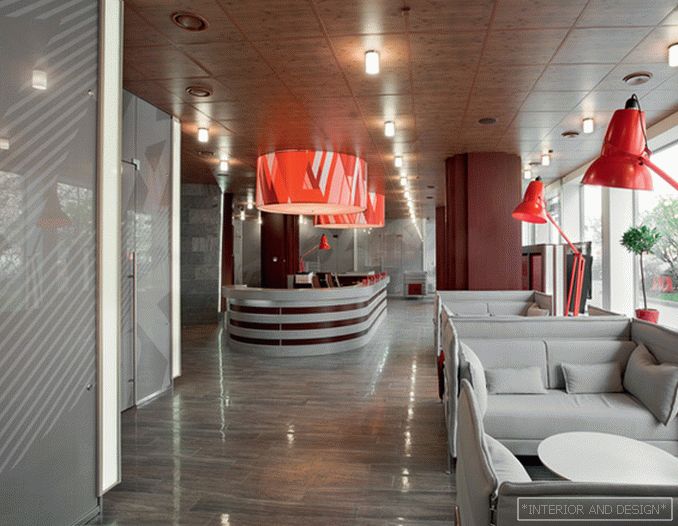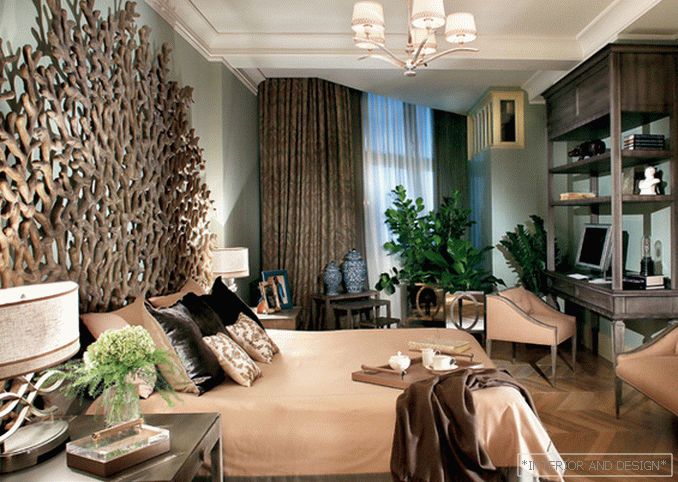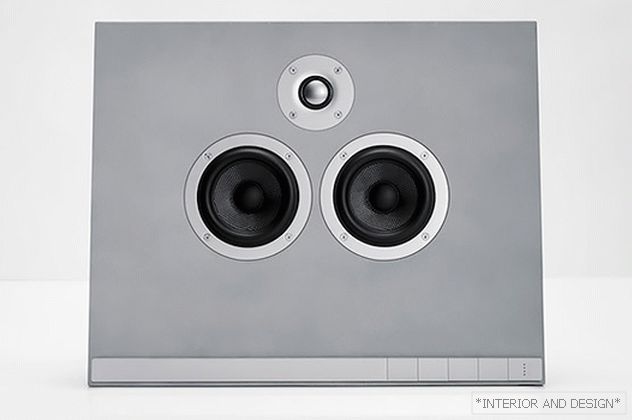The most famous Finnish architect and designer, Alvar Aalto (3.02.1898 - 05/11/1976), in 78 years of his life, built many buildings in Europe, the USA, and even in Iraq. There are universities, libraries, museums, theaters, cultural centers, offices, schools and churches all over Finland. There are not so many villas for private customers in this list. One of the most famous is not in Finland, and near Paris.
Related: Joe Ponty: Nine Principles of Architect
This masterpiece by Alvar Aalto - the house of Louis Carré - is closely associated with the name of the artist Andrei Lansky.
The famous art dealer invited a famous architect to build a house for him. For two years, from Finland, where the author lived, to France, where the customer lived, regularly carried wood and workers. When the house was finished, the merchant was satisfied. And asked the famous artist to paint a picture for the dining room. "The best artist" also agreed. He said: “This picture should look like a huge geographic map. On it we will see all the streams, rivers, lakes and oceans. On it we will see trees, flowers, plants. And we feel all the smells of our land. ” Something like this, literally in a few sentences, Andrei Lanskoy described the history of the creation of Carre’s house, without false modesty calling himself “the best artist of that time”. However, in the early 1960s (and, by the way, with the help of the “dealer of paintings” by gallery owner Louis Carré), he already had considerable reason to put himself so high. His work is already selling well.
By the end of the 1930s, not without the influence of Kandinsky, Lanskoy developed his own, unlike any other unlike style of painting. His "lyrical abstraction" attracted by its organic nature. “It’s not necessary to write an abstract or figurative thing — you have to paint a picture,” he said. - You just need to mix colors and divide them at the right time — either oppose, or push, declare a “truce”, seek mutual understanding between them, and even more: the most cordial relations; put them on the canvas softly or coarsely and not know what role they will play in this drama ". Abstract painting "gives spectacular shape to the invisible: our thoughts, our feelings, our spiritual experiences, which are a significant part of our life."
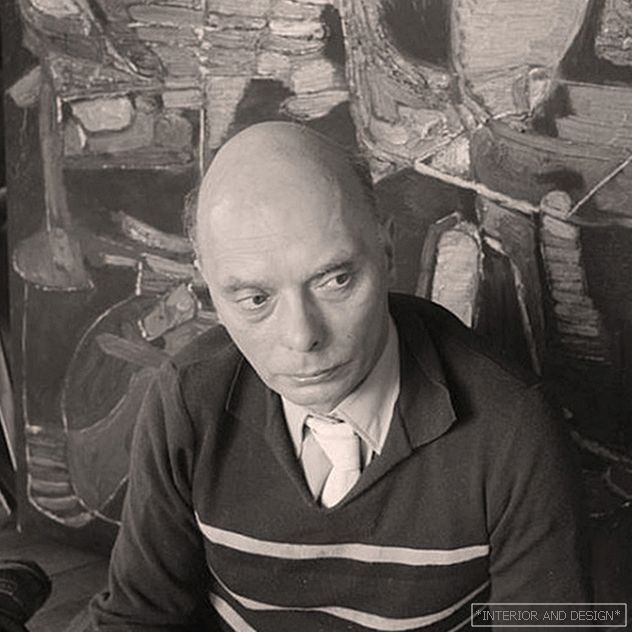 Andrey Lanskoy. Paris.
Andrey Lanskoy. Paris. Lansky noticed art historians and collectors. Louis Carré, at the time of their acquaintance in 1944, had been the owner of his own gallery for three years. He exhibited the works of artists such as Raoul Dufy, Fernand Leger and Pablo Picasso, and was keenly interested in everything that happened in the art of post-war France ... Parisian exhibitions in the gallery Carré, gradually gaining fame and recognition.
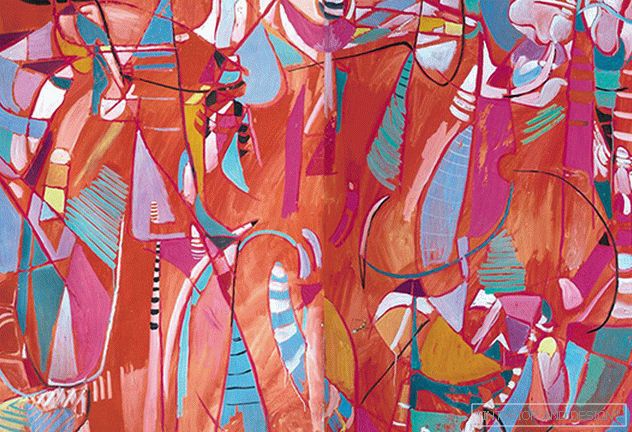 Andrey Lanskoy. Abstract composition. 1955.
Andrey Lanskoy. Abstract composition. 1955. Criticism accused abstraction of incomprehensibility, complexity for perception and self-sufficiency. They said that these canvases are hard to fit into real life and coexist with figurative painting. Nevertheless, in 1950, Carré organized the Modern Paintings to Live With exhibition in his New York gallery. Moreover, he decided to build a country house, which will be decorated with the works of those masters with whom he had collaborated all these years.
 Alvar Aalto with husband and wife Karra.
Alvar Aalto with husband and wife Karra. So, in 1955, forty kilometers south-west of Paris, land was acquired in the town of Bazoches-sur-Guyonn. The construction of the villa was supposed to be entrusted to Le Corbusier, with whom the gallerist had friendly relations. What stopped him? Carré feared that the architecture of the famous Swiss would be too speculative, alien to this picturesque place. And opted for Alvar Aalto. Finn brilliantly embodied the ideas of the customer. He located the house on a hillside and with the help of the details involved him in a dialogue with the landscape. He emphasized the hilly landscape and the beauty of the oak grove.
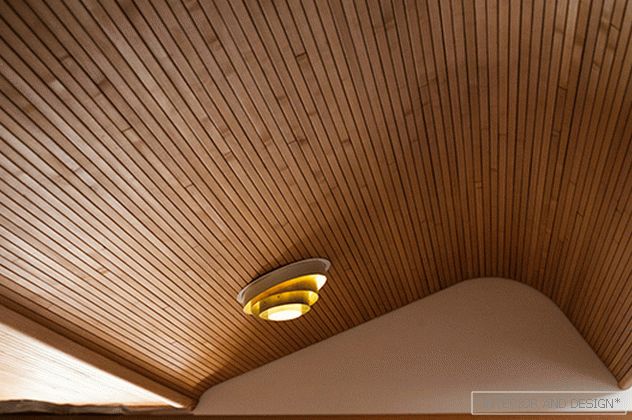 The interior of Villa Carre.
The interior of Villa Carre. The building is a composition of several volumes of different heights. All rooms have natural light. (Architectural historians believe that this master's work resembles Meyer’s earlier villa, which Aalto designed before the war.) White brick with the addition of natural stone was used in construction: limestone, travertine, and slate. Inside, white surfaces alternate with wood-paneled walls and ceilings. Window openings, sometimes full-length, make architecture even easier, opening up the interior space. Through the large windows it is additionally connected with the surrounding landscape. Aalto also designed furniture and author's interior elements, completed the garden project. The result was a unique work of art: a private gallery house, convenient for both the family’s chamber life and the reception of official guests and business meetings. Its structure is simple and concise. The dining room, living room and library are grouped around the central hall, while the bedrooms and other rooms not intended for public access are located in the southern part. The passage to these rooms is skillfully hidden from prying eyes.
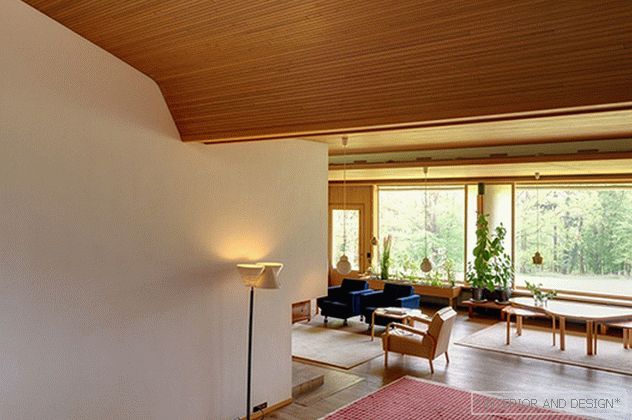 The interior of Villa Carre.
The interior of Villa Carre. 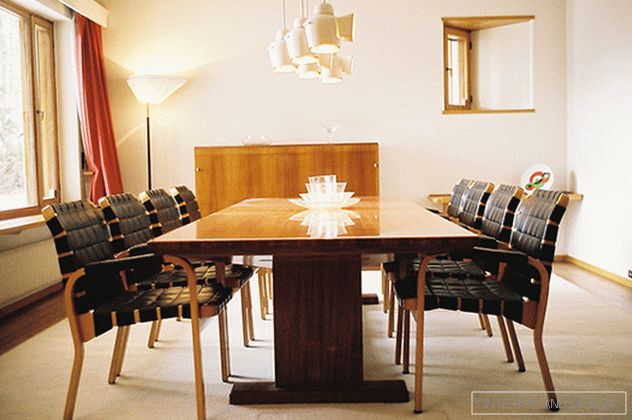 The interior of Villa Carre. Столовая, в которой висели картины Ланского.
The interior of Villa Carre. Столовая, в которой висели картины Ланского. 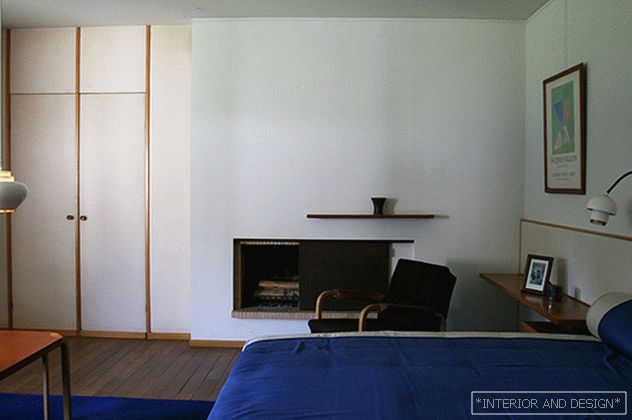 The interior of Villa Carre. Спальня.
The interior of Villa Carre. Спальня. Knowing that the house will house a collection of paintings, the architect planned the space in a special way. It is even possible that the location of some works was determined at the design stage. Counting on the future hanging, the architect placed the window openings, at the same time thinking through the necessary lighting. In 1959, construction and decoration were fully completed. Unfortunately, now you can recreate the interior only from a few photographs and memories of eyewitnesses. Moreover, the reproductions in the catalogs came from the very auctions where much of the artworks belonging to the Carr spouses were sold much later. Among other things, these are works by Pierre Bonnard and Jean Bazin, Raoul Dufy and Maurice Estev, Fernand Leger, Aristide Maillol and Jacques Villon.
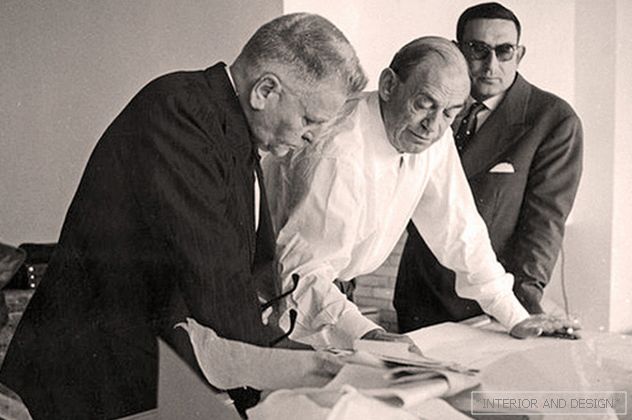 Lui Karre and Alvar Aalto.
Lui Karre and Alvar Aalto. In one of these catalogs, there is a reproduction of Lansky's painting “The Entrance to the Garden”, which also once adorned the gallery house in Bazoches-sur-Guyonn. In the late 1950s, on the order of the house owner, he completed a series of six works for the dining room. Similar to stained glass, bright, filled with light and color, these horizontal compositions perfectly corresponded to the light architecture of Aalto, echoed the shape of the windows. And in terms of tonality and intensity, they resembled a picturesque surrounding nature, as if transmitting it inside the room. There was an illusion of repeated approach and increase in fragments of the landscape opening from windows.
After the death of the Carre spouses, their heirs put up for sale the building, as well as most of the unique interior details. And although in 1996 the house was recognized as a historical monument and came under the protection of the French state, the interior was not protected by law and was sold piece by piece. Now here is the Finnish Cultural Center. And if you come to this Parisian suburb to look at the architecture of Aalto, remember that once this villa was decorated with magnificent paintings by Russian painter Andrei Lansky.

